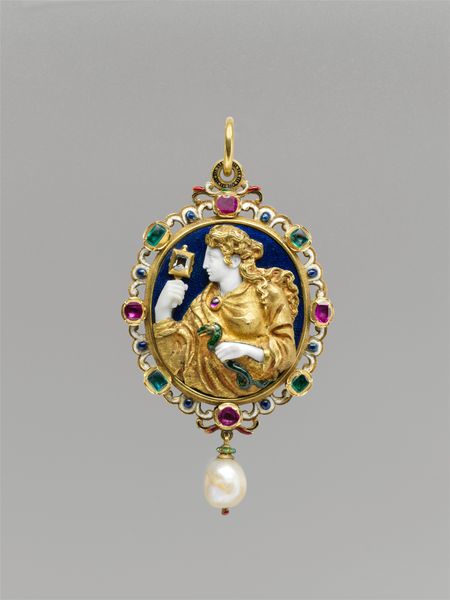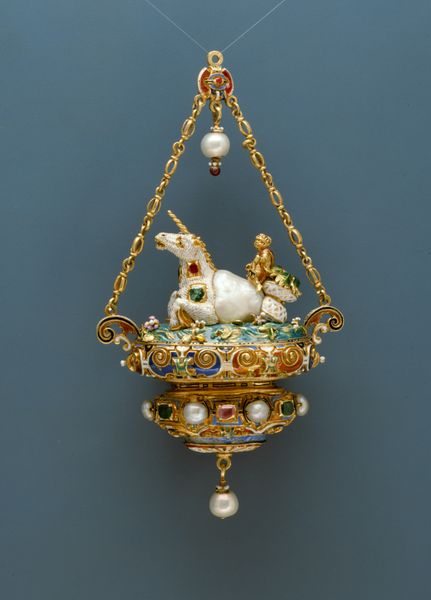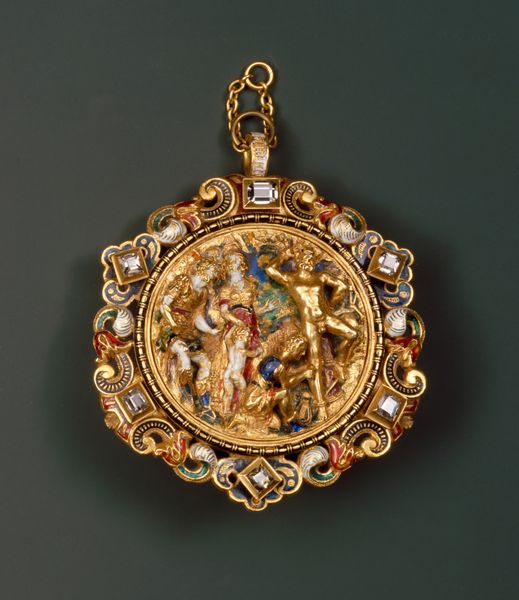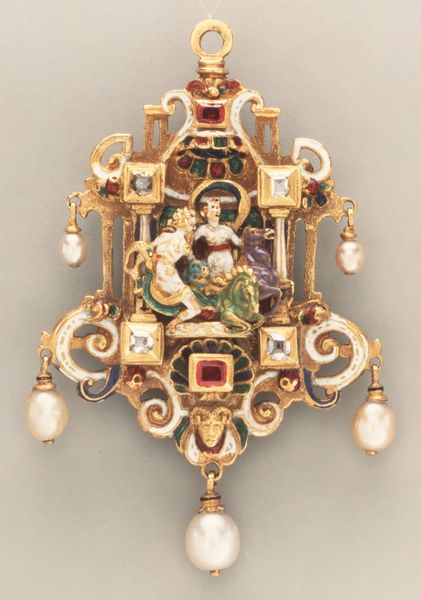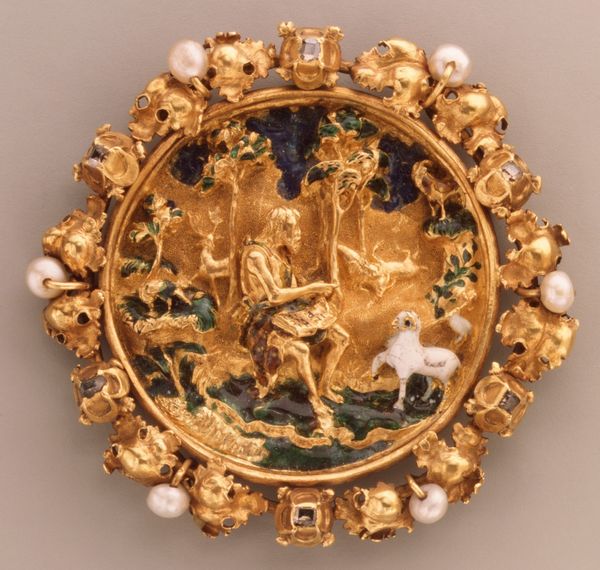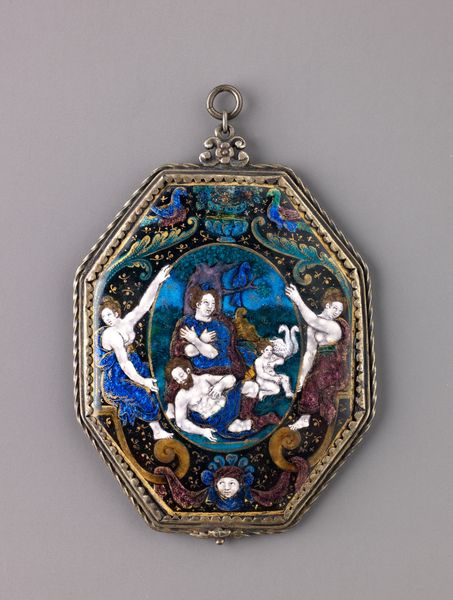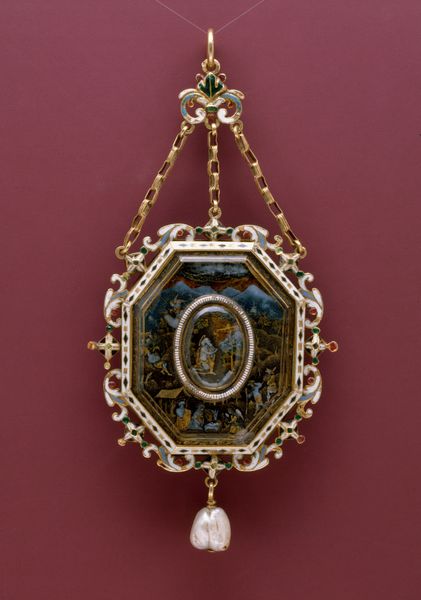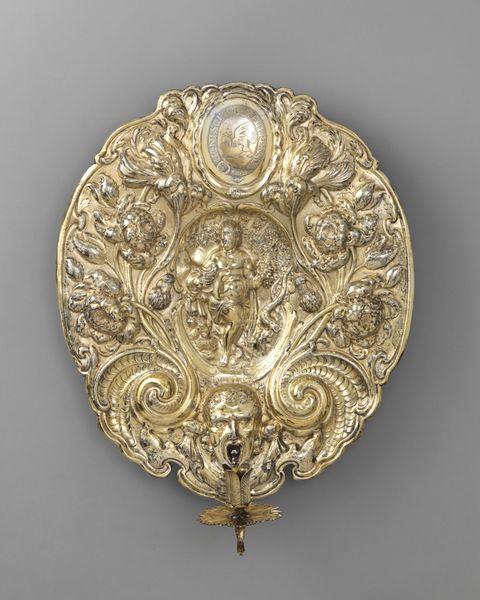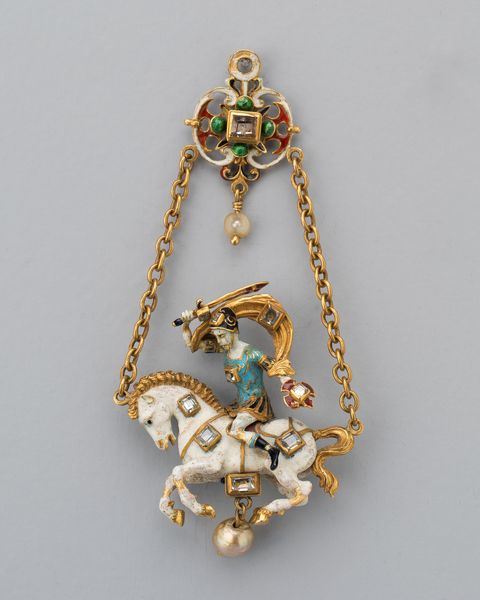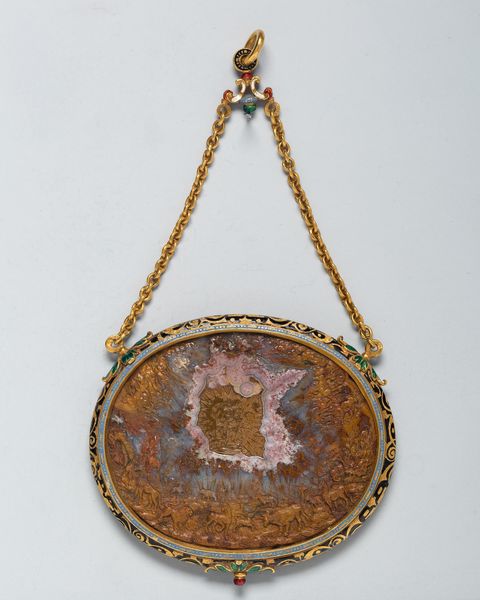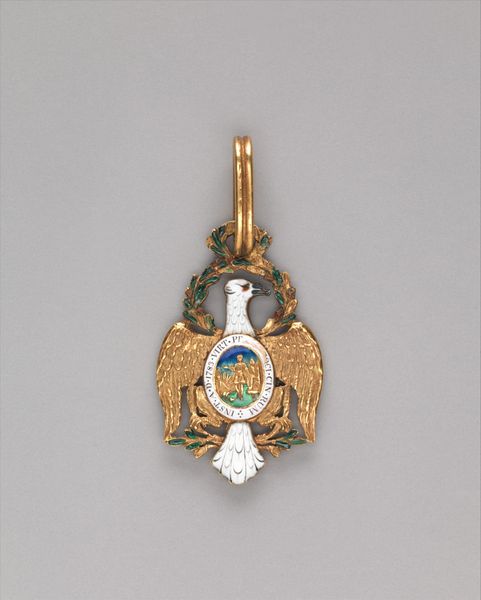
metal, gold, sculpture, enamel
#
portrait
#
medieval
#
metal
#
gold
#
figuration
#
sculpture
#
enamel
#
decorative-art
#
decorative art
#
miniature
#
angel
Dimensions: Height: 7 1/8 in. (18.1 cm)
Copyright: Public Domain
Curator: Welcome. Here we have "The Sacrifice of Isaac," an enameled gold pendant likely crafted between 1850 and 1899 by Reinhold Vasters. It's currently held at the Metropolitan Museum of Art. Editor: Immediately, the intricacy jumps out at me. The scale suggests jewelry, but the density of the narrative packed into such a small space is astonishing. And those enamel colors are intense. Curator: Indeed. Vasters was a master goldsmith known for his revivalist style, often looking back to the medieval and Renaissance periods. He wasn't simply copying, however; he was reimagining earlier techniques and aesthetics through a 19th-century lens. The prominent placement of this pendant in the Met really says something about the power decorative art holds to tell significant stories. Editor: And what a grim story, visually softened here by the vibrant enamel work and gold. The making of this piece… I imagine it involved painstaking labor: the preparation of the gold, the meticulous layering and firing of the enamel, not to mention setting each tiny pearl. It is about more than just adornment. What would something like this communicate? Curator: It tells the biblical story of Abraham’s willingness to sacrifice his son Isaac. It’s interesting how Vasters, working in a time of increasing secularization, would revisit such a weighty religious theme. These luxury items, though seemingly frivolous, held tremendous cultural value and helped shape social identities in the rapidly changing European societies of the 19th century. Editor: You're right, that story feels both elevated and confined by the goldwork around it. This object prompts you to consider art and labor across vast differences. Imagine the contrasts and continuities in skilled making from a Renaissance workshop through the industrial age…and even in this moment, when our perspectives are again in flux. Curator: Precisely. Studying a piece like "The Sacrifice of Isaac" allows us to understand how history is interpreted and presented to the public. Museums play an important role in this, by elevating a decorative work to the status of art. Editor: Seeing it this way does reframe it—as not merely decorative, or biblically inspired, but actively making a statement about the values it portrays. Thanks for walking me through it. Curator: My pleasure, and hopefully it leaves our listeners considering the layered history of how a museum object tells stories.
Comments
No comments
Be the first to comment and join the conversation on the ultimate creative platform.

